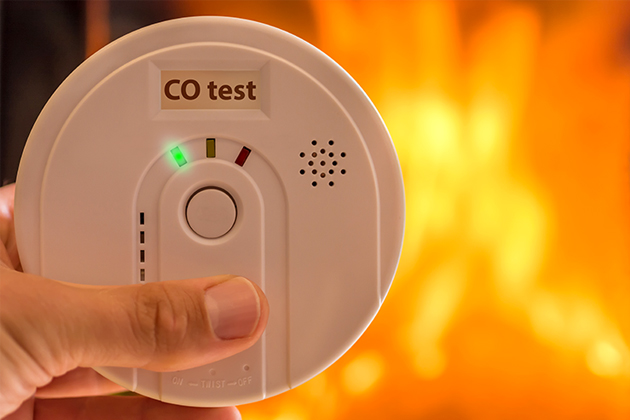
According to the Centers for Disease Control, more than 100,000 people in the United States visit emergency rooms due to accidental carbon monoxide poisoning every year and more than 400 do not survive. Carbon monoxide (CO) is a colorless, odorless gas that can be poisonous. At low concentrations, CO can lead to fatigue in healthy people and chest pains in people with heart disease. At higher concentrations, it can cause nausea, confusion, dizziness, headaches, impaired vision and even death. Unvented kerosene and gas space heaters, leaking chimneys, automobile exhaust and poorly working furnaces or pieces of equipment can all be sources of carbon monoxide.
Because CO is difficult to detect, a building might have a leak and the organization could have no idea. Therefore, it is important to know the signs of a CO problem, including:
- streaks of soot around fuel-burning appliances
- excess moisture on windows, walls or other cold surfaces
- excessive rust on flue pipes, other pipe connections or appliance jacks
- orange or yellow flames in the combustion appliances
- small amounts of water leaking from the base of the chimney vent or flue pipe
- damaged or discolored bricks at the top of the chimney
The following steps can help organizations prevent the risks of a carbon monoxide leak and protect everyone on the premises from CO poisoning:
- Bring in a professional. Have all furnaces, gas stoves and fireplaces checked annually by a qualified professional who will make sure they are venting properly. A professional should check flue pipes for rust holes, poor pipe connections and blockages, such as soot buildup or birds’ nests.
- Install carbon monoxide alarms throughout the building. Building codes require a carbon monoxide alarm if a building burns fuel for heat, hot water or cooking, or if the facility has enclosed parking areas. CO alarms can save lives by alerting everyone in the building of lethal levels of CO in the air. Test the alarms regularly and replace them every five to seven years.
- Use kitchen vents when running the stove. Stoves cause a large number of CO poisoning cases. Even if it seems like warming something up does not generate much heat, it is important to run an exhaust fan and open a nearby window for air circulation.
- Avoid letting vehicles idle for extended periods of time. It is especially important to prohibit idling vehicles close to the building’s air input system as they could introduce CO into the system inside, potentially putting lives at risk in the building.
- Only operate generators outdoors. To prepare for a power outage or in the event of a power outage, place generators 10 to 15 feet away from the facility.
- Switch up power sources. Consider switching from gasoline-powered equipment to equipment powered by electricity, batteries or compressed air. Additionally, never use gas-powered tools indoors or in confined spaces as CO could permeate the space and put the user in danger.
- Clean out fireplace flues. A clogged flue can trap carbon monoxide in a building, so it is important to establish a routine of cleaning out the flue before every use.
In the event of a CO poisoning incident, preventative measures like those above can also help demonstrate that the organization has not been negligent. In addition, several forms of insurance can help protect the organization financially, including comprehensive general liability, umbrella and excess liability policies. However, not every insurance policy is the same. To ensure proper protection, risk professionals should speak with their organization's insurance agent and/or broker about the organization’ s specific needs. Be sure to discuss what a given policy covers, what the limits are and what, if anything, is excluded. If necessary, the organization can then fill in any gaps with other policies.
Protecting against carbon monoxide poisoning should be part of every organization’s list of regularly-performed tasks. Whether it is the building manager or a designated staff member, someone should be keeping track of how the organization is responding to this deadly danger.
